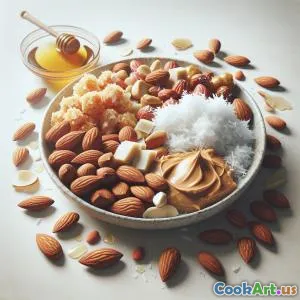Essential Knife Skills for Home Cooks
5 min read Master essential knife skills to elevate your home cooking with precision, safety, and style. April 07, 2025 14:45
Essential Knife Skills for Home Cooks
Cooking is an art that begins with the right tools, and at the heart of any kitchen is the knife. Mastering essential knife skills not only enhances your efficiency but also elevates the quality of your dishes. Whether you’re chopping, slicing, or dicing, a good grip and technique can make all the difference. In this article, we’ll explore fundamental knife skills that every home cook should master.
1. Choosing the Right Knife
Before diving into the skills, it’s crucial to understand the tools at your disposal. A few essential knives every cook should own include:
- Chef’s Knife: Versatile and perfect for most tasks.
- Paring Knife: Ideal for intricate work and peeling.
- Serrated Knife: Great for bread and tomatoes.
- Boning Knife: Useful for trimming meat and fish.
Selecting the right knife for the job can significantly improve your efficiency and precision.
2. Mastering the Grip
A proper grip is the foundation of knife skills. Here are two main grips you should know:
- Pinch Grip: Pinch the blade between your thumb and index finger, wrapping your remaining fingers around the handle. This grip offers stability and control.
- Handle Grip: This is more common among beginners, where all fingers wrap around the handle. While it’s easier to start with, it lacks the precision of the pinch grip.
3. Basic Cutting Techniques
Chopping
Chopping is a basic skill used for vegetables and herbs. To chop:
- Hold the knife at a 45-degree angle.
- Use a rocking motion, keeping the tip of the knife on the cutting board.
- Make sure to keep your fingers curled under your knuckles for safety.
Slicing
Slicing is essential for meats and veggies. To slice:
- Use long, smooth strokes, applying even pressure.
- For tender items like tomatoes, use a serrated knife for a clean cut.
Dicing
Dicing involves cutting food into uniform cubes. Here’s how to do it:
- Start by slicing the ingredient into strips.
- Then, turn the strips and cut them crosswise into cubes.
Julienne
For a sophisticated presentation, julienne vegetables:
- Start with a rectangular piece of the vegetable.
- Slice it into thin strips (about 1/8 inch thick) for a delightful texture.
Mincing
Mincing is essential for herbs and garlic. To mince:
- Gather the ingredients into a pile and run the knife through them repeatedly, using a rocking motion.
4. Knife Safety Tips
Safety in the kitchen is paramount. Here are some tips to keep in mind:
- Always use a cutting board.
- Keep your knives sharp; dull knives can slip and cause injuries.
- Never try to catch a falling knife.
- Store your knives safely, preferably in a knife block or magnetic strip.
5. Maintaining Your Knives
To ensure longevity:
- Regularly hone your knives with a honing steel.
- For sharpening, use a whetstone or professional sharpening service.
- Clean your knives by hand; avoid the dishwasher to prevent damage.
Conclusion
Mastering knife skills is essential for any home cook aiming to enhance their culinary experience. Not only does it improve efficiency, but it also adds a level of professionalism to your cooking. With practice, patience, and the right techniques, you’ll find that these skills can transform the way you approach food preparation. Remember, every slice, chop, and dice brings you one step closer to becoming a more confident cook. Happy chopping!









